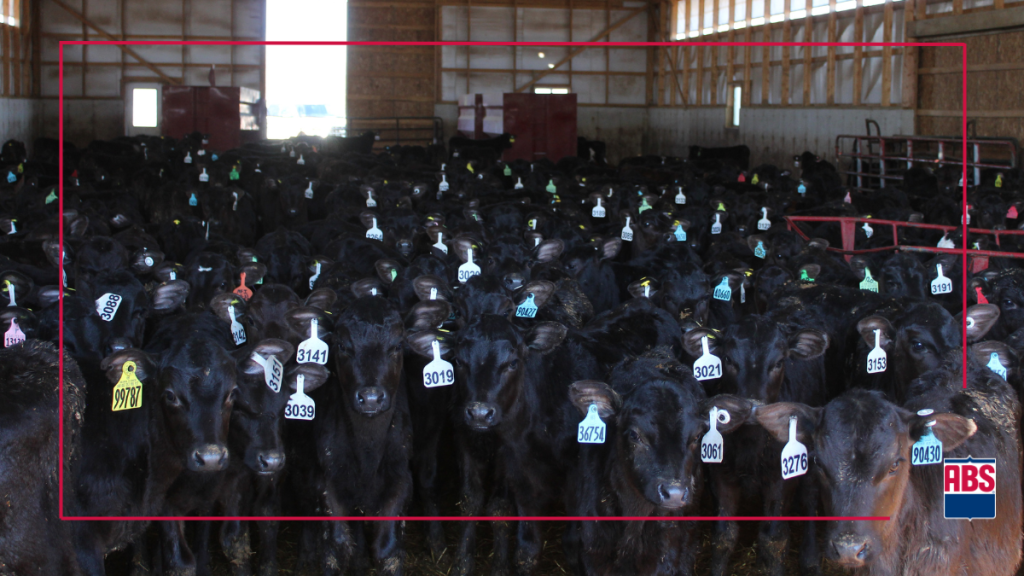Publish date: 2.14.25
Increasing selection pressure to manage heifer inventories and maximize the value of beef pregnancies is a common genetic strategy, and your calf crop’s gender ratio impacts profitability. That’s why you must be diligent in determining the purpose of every pregnancy.
How To Determine the Outcome of Each Pregnancy
Determining each pregnancy’s outcome has never been more crucial due to rising input costs and strong calf prices. Even before a pregnancy is confirmed, the choice you make on breeding day affects that calf’s future. There are two types of calves produced: one for future herd genetics or one for short-term cash flow.
Before breeding day, you need to make sure you create the right amount of each calf type. Ask yourself these questions to determine the outcome of each pregnancy:
- What is your current herd performance versus your future herd goals?
- Why are you culling females in your herd and at what rate?
- How many heifers do you need to raise?
- What opportunities do you have when marketing beef crosses?
The good news is you can maximize the value of your beef-cross calves and focus on the selection intensity of your females because of advancements in genetic technology. The following are your tools to maximize profitability on your dairy.
IVF Embryos
The speed at which genetic improvement can be made is the primary advantage of using in vitro fertilization (IVF) embryos in your genetic strategy. With IVF embryos, you can produce a whole herd of ideal cows for your system while optimizing the return on your investment. This tool increases the intensity of selection, allowing you to make dramatic change in a single generation.
IVF embryos allow you to multiply your best cows—the most genetically superior animals—from the middle portion of your herd. In other words, you can increase the level of selection, for instance, to the top 10% of your herd and have the good-producing cows in the middle-portion of the herd carry of a higher-genetic quality heifer calf.
What are the benefits of embryos?
- Creates a more elite and uniform group of animals
- Greatly reduces twinning rates on a dairy
- Improves summertime conception performance by removing the fertilization factor of breeding
- Increases the actual lifetime profit of your herd by improving its genetic value
Male-Sexed Beef Semen
Male-sexed beef semen is the next tool that dairies are using more frequently. While it doesn’t result in genetic improvement of your herd, it can raise the value of the calf crop you produce. The advantages male animals bring to the beef supply chain in terms of increased feed efficiency, average daily gain, and feed conversion are recognized by the chain. Markets like Overland Stockyard are compensating producers according to the gender of their calves because they see the value of male animals.
Male-sexed beef semen provides you the opportunity to leverage your team, facility and business strengths. If you can, retaining ownership of your beef cross calves is where you’ll reap the benefits of using genetics designed for the beef supply chain. However, if you are selling day olds, you need to be prepared for pickier future calf buyers when the market shifts, and this tool can help differentiate you and lead to sustainability.
Changing the ratio of the gender of your calf crop—like you’ve done for years with dairy genetics—is a differentiation factor that leads to profitability and sustainability.
Where to Use These Tools to Maximize Profitability
Here are a few suggestions on where to use these tools to maximize profitability in your genetic plan:
- Embryos and male-sexed semen should be deployed into fertile heats that will result in a pregnancy, but only in animals not critically needed to create a replacement—think of females you want to harvest milk from but not genetics.
- Females who are good candidates for embryos or male-sexed semen are the ones who are healthy, will give us another calf and will remain in the herd through that lactation.
- Typically, you would want to use embryos and male-sexed semen in young animals and use on first and second services.
- When implementing male-sexed semen, you should handle it just like female-sexed.
You have access to more tools to maximize profitability today than ever before. Are you leveraging them in your genetic strategy? Learn more about these tools to maximize profitability by reading our article originally published in Progressive Dairy.
To start implementing them today, talk to your Genetic Advisor or complete the form below.






